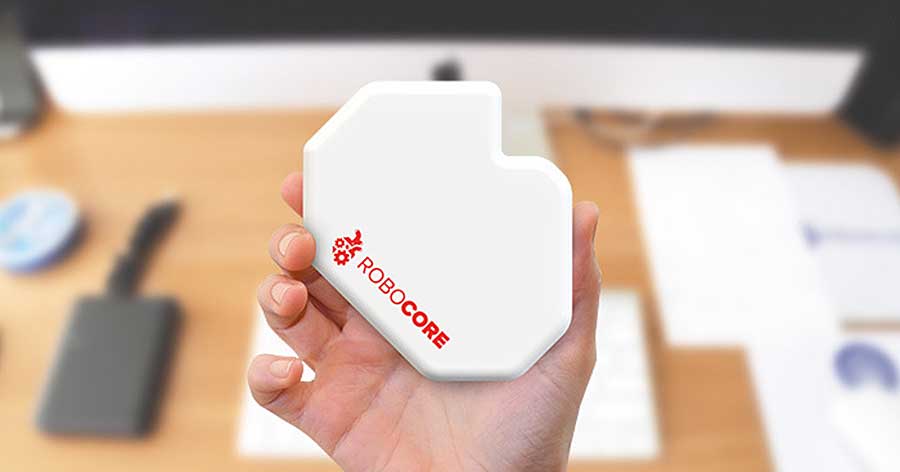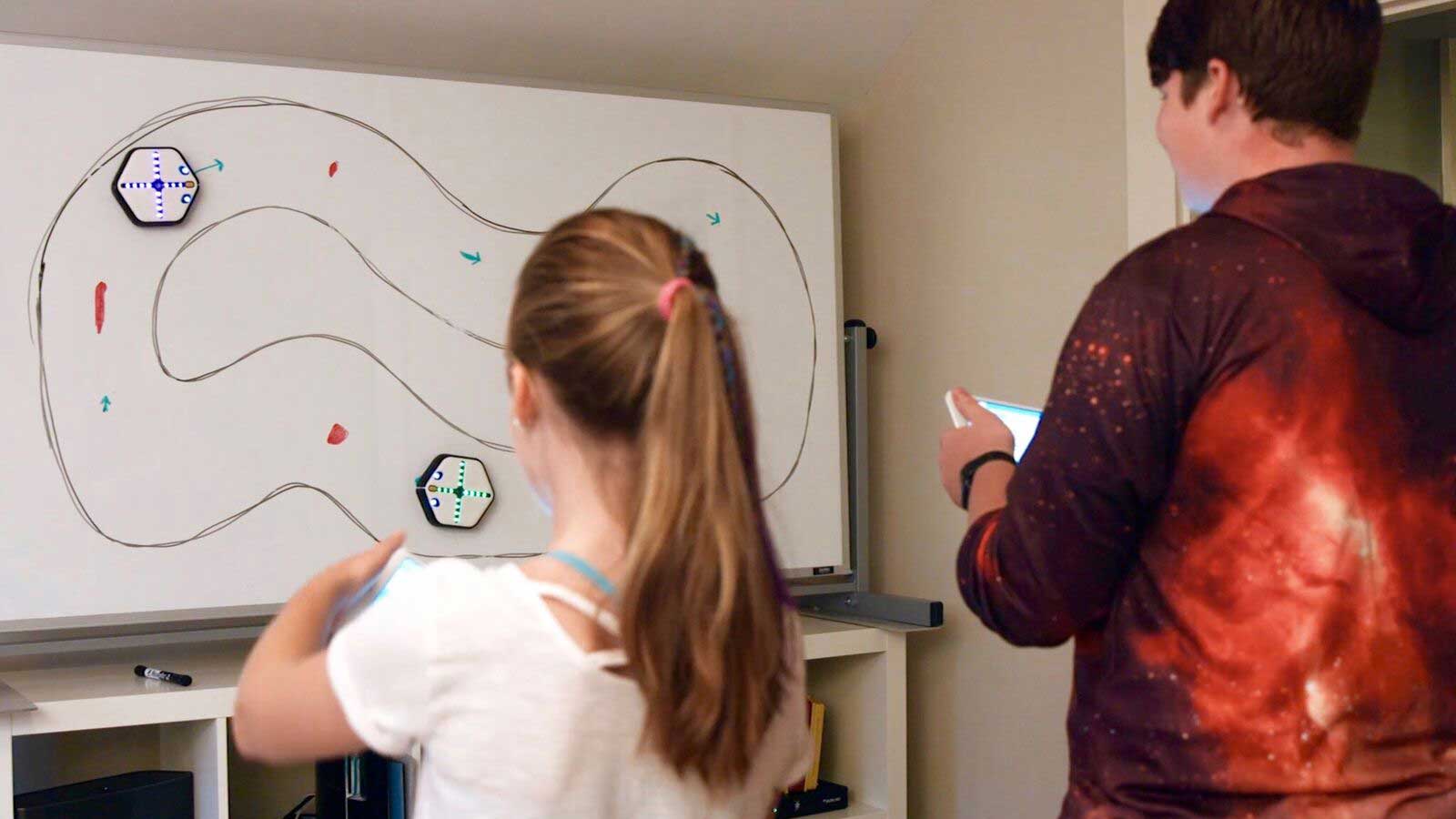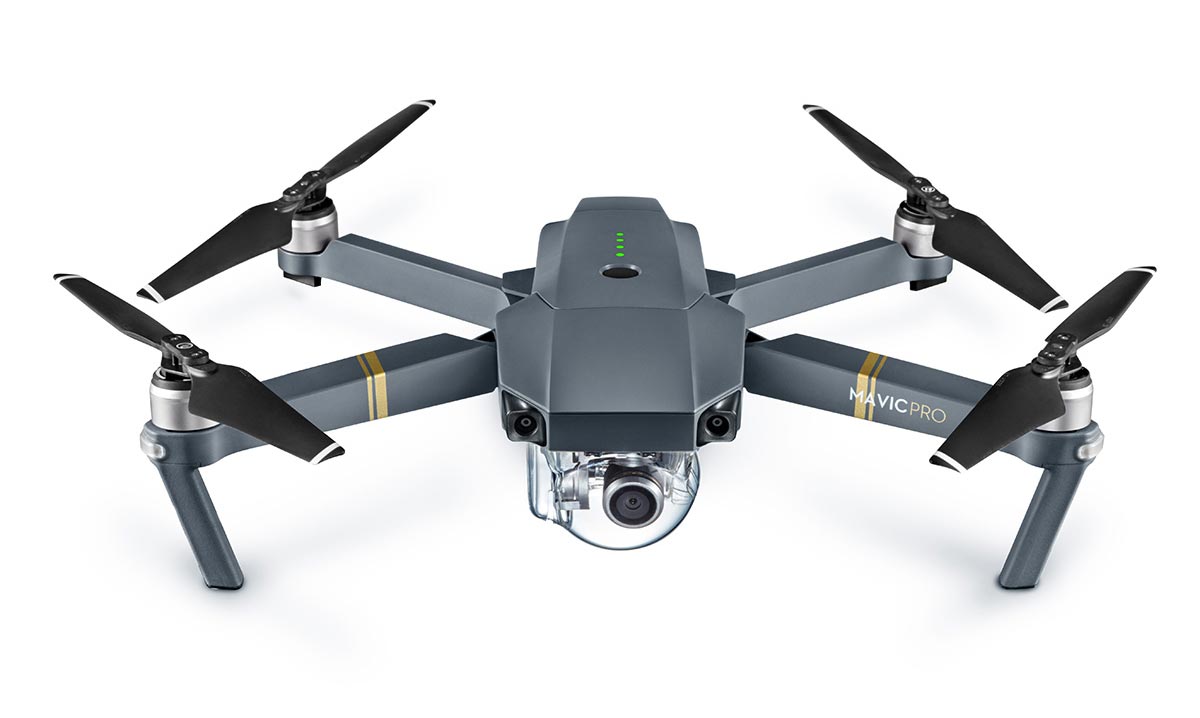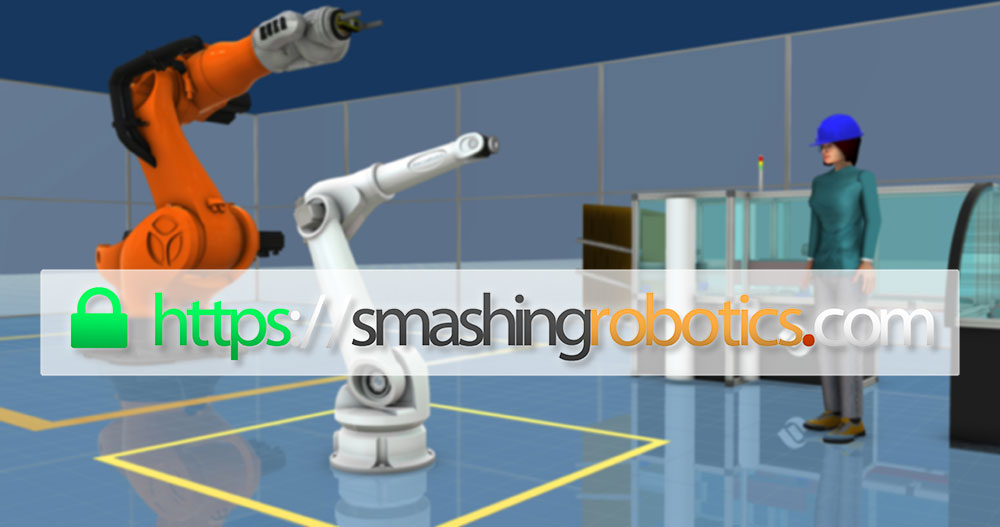Do you have an idea for a robot and want to quickly start building it? Or maybe you would like to build one but don’t have that much expertise with electronics? What if you have an already built project and want to add more features to it? Worry no more RoboCORE has just been launched on Kickstarter. This is a cloud powered development platform that promises to let you focus on your creations without necessarily requiring you to fiddle with lower layer electronics or intricate software designs.

RoboCORE aims to be a complete hardware and software solution, an “ecosystem”, for driving and programming your robots or any connected creation for the matter. The system is comprised of the RoboCORE physical hardware unit, the cloud service and the programming library.
March 2nd update: With only 10 days to go and a little over US $20,000 to reach the proposed campaign goal, the RoboCORE project is very close to becoming reality.
The physical RoboCORE unit contains not only the main Cortex-M4 processing unit but also motor drivers, GPIO, ADC and serial interfaces which are also compatible with Mindstorms EV3 and NXT motors, sensors and controller bricks. There is also an optional integrated Intel Edison MCU which handles Wi-Fi and Bluetooth connectivity, however instead of this it is also possible to attach a smartphone or a Raspberry Pi to the USB port for internet access and other functions.
An interesting interface implemented into the RoboCORE is the CAN bus, a message-based protocol developed initially for in-car communications between modules, now adopted in industrial environments for real-time distributed control in automation applications. CAN bus allows for linking up to 20 RoboCORE units together without significantly affecting response time.

RoboCORE is driven by a real-time OS (RTOS) therefore the platform is well suited for applications requiring quick response, a two wheel balancing robot or a regulator for automation tasks being such examples.
The integrated cloud service enables you to program and control the unit through a web-based IDE from any computer browser or iOS/Android smartphone app, together with a powerful hFramework library which allows for high-level programming in C++ or Python. The library will be made available as open source upon successful funding of the project.
Quick Specs
RoboCORE comes in two flavors, the standard full featured unit and the RoboCORE mini which has fewer motor, sensor and expansion ports and also no CAN bus port but features 6 internal servo ports. Let’s take a look at the comparison chart below.
| RoboCORE | RoboCORE mini | |
|---|---|---|
| Dimensions: | ||
| 115x125mm/4.53×4.92inch | 82x82mm/3.2×3.2inch | |
| STM32F4 168MHz ARM Cortex-M4, 1MB Flash, 196KB RAM + optional Intel Edison | ||
| Dual-band 802.11 a/b/g/n Wi-Fi, Bluetooth 4.0 and 2.1 via Intel Edison | ||
| 1 CAN bus port | – | |
| SD card interface | ||
| 1 USB host, 1 USB slave + 1 USB host via Intel Edison | ||
| hMotor DC motor + encoder input ports: | ||
| 6 | 2 | |
| – | 6 internal servo ports | |
| Maximum external servo ports via expansion module: | ||
| 24 | 12 | |
| hSensor I2C/UART, ADC, GPIO, interrupt channel Sensor ports: | ||
| 5 | 4 | |
| hExt I2C/UART, ADC, GPIO, SPI, interrupt channel Expansion ports: | ||
| 2 | 1 | |
| Power supply: 6-14 VDC | ||
RoboCORE has been created by Husarion, a startup from Poland which is now a team of highly skilled engineers and robotics enthusiasts, with numerous interesting and awarded projects in their portfolio.
To find out more or to support this interesting project head to the RoboCORE campaign page. A minimum early-bird pledge of US $59 will get you a RoboCORE mini unit, for $114 you can get the RoboCORE mini + integrated Intel Edison version. A full-featured RoboCORE is available for a $144 pledge. There are also complete building kits to pledge for including sensors, accessories and even LEGO Mindstorms parts, merchandise and even a Ralph 2-wheel balancing robot kit. Shipping is expected to start in July this year.







